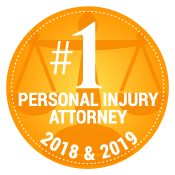Bakersfield Bus Accident Attorneys
- 550+ Google 5-Star Reviews
- $1 Billion won over 15 years
- Won’t settle for low offers, not afraid to fight for max value
Get a Free Case Evaluation
No fees until we win!
All San Diego Case Types

Personal Injury

Brain Injury

Car Accident

Slip & Fall

Truck Accident

Wrongful Death
Bakersfield Bus Accident Attorneys
Ninety percent of the population of California is only four hours away from Bakersfield. Because of this, the city’s roadways are filled not only with traffic from local residents, but also from people who are passing through on their way to other parts of the state.
On Bakersfield roadways, it is not unusual to see different types of buses in the mix of traffic. After all, school buses travel these roads each day to transport youth to school or extracurricular events. Tour buses are regularly seen carrying visitors around or through the area. There are Golden Empire Transit buses that serve all parts of Bakersfield, and the Greyhound provides service through Bakersfield as well.
If you have been injured in an accident involving a bus, you likely have questions about how such an accident can happen and what your legal options are for obtaining compensation for your injuries. A Bakersfield bus accident lawyer from Gomez Trial Attorneys can provide the guidance and information you need. In 15 years, Gomez Trial Attorneys have obtained more than $750,000,000 for our clients, and our founder, John Gomez, has been named San Diego’s Outstanding Trial Lawyer eleven times, along with many other local, state, and national honors. Contact us today for a free case evaluation.
TYPES OF BUS ACCIDENTS
As mentioned, there are several types of buses that regularly travel in and through Bakersfield. Here is a brief look at each of these types of accidents.
SCHOOL BUS
As noted by the National Highway Traffic Safety Administration (NHTSA), students are about 70 times more likely to get to school safely on a school bus than they are in a passenger car. There are several reasons for this, including the size of the bus that distributes the force of the crash differently than a passenger car and often results in less severe injuries; the design that included high-backed seats and is intended to keep students from being thrown around in a collision; and increased regulations both for the driver as well as for other drivers who are operating their vehicles in the vicinity of the bus.
For example, it is illegal for drivers to pass a school bus that is stopped, has its red lights flashing, and has its stop sign extended.
That having been said, there are more than 1,000 accidents involving school buses on U.S. roads each year. These accidents result in more than 100 fatalities, including four to six student fatalities. Many of those fatalities involved passengers in other cars, pedestrians, and bicyclists.
TOUR BUS
Tour buses are frequent sights in Bakersfield, as visitors to the region and state travel here for conferences, events, or even just passing through on their way to the casinos and other attractions in neighboring regions. Tour buses, along with other types of buses that provide transportation to the public for a fee are considered “common carriers,” and are held to a higher duty of care than other drivers on the roadway.
The “duty of care” refers to the way that a reasonable person would respond in a similar set of circumstances. In passenger cars, drivers are expected to operate the vehicle safely and legally. Tour bus companies, their drivers, and other common carriers are held to the regulations put forth by the Federal Motor Carrier Safety Administration, including special licensing requirements to operate the vehicle, and increased expectations regarding passenger safety, including keeping the aisles clean and avoiding letting people off the bus in areas that are known to feature a high amount of crime or other hazards that could cause injury to passengers.
Tour bus drivers must obtain regular health checks to ensure that they can physically do the job safely and companies must perform regular maintenance on the vehicle. The drivers must maintain a clean driving record and cannot exceed a certain number of hours of driving the bus before taking an off-duty break.
PUBLIC TRANSPORTATION
Like tour buses, city buses such as those provided by Golden Empire Transit and long-trip buses such as those provided by Greyhound are considered common carriers, and drivers must submit to the same requirements. However, a case involving a privately-owned bus can be drastically different than a case involving the government ownership of Golden Empire Transit.
The Golden Empire Transit District was formed in 1973 and it is the primary public transportation provider for the urban Bakersfield area.
If you were injured in a bus accident involving a governmental entity such as a transportation district, the process and deadline for filing your claim will differ from a claim against a private company. In most cases, the deadlines are much shorter, which means it can be imperative that you speak to an attorney right away to protect your right to be compensated for the impacts and expenses of your injury.
COMMON INJURIES CAUSED BY BUS ACCIDENTS
Despite endeavors to make transportation on buses as safe as possible, accidents still happen and result in serious injuries. Some of the more common injuries to be sustained in a bus accident are examined below.
HEAD INJURY
Head injuries include traumatic brain injuries, which are often life-altering or even life-threatening, as well as injuries to the scalp, skull, and face. Traumatic brain injuries are the result of a violent blow to the head or body that results in damage to the brain. The brain has only a limited ability to heal itself from injury, meaning that many of the deficits that occur with a traumatic brain injury are permanent.
As explained by the Brain Injury Association of America, the brain is segmented into different areas—known as lobes—that each control different functions of the body. The type of deficits an individual will acquire depends not only on the severity of the injury but also on the part of the brain that was injured.
Some of the deficits commonly experienced after a brain injury include:
- Inability to move in a balanced, coordinated manner.
- Difficulty understanding spoken language or communicating through spoken language.
- Difficulty controlling one’s emotions, behavior, and impulses.
- Loss of memory.
- Difficulty organizing and initiating tasks.
- Problems with the five senses, including loss of smell or taste, hearing loss, or difficulty seeing or perceiving the size and shape of objects.
- Consciousness disorders, such as a coma, vegetative state, or a semi-conscious state.
Brain injuries often are accompanied by complications that can result in further damage if not properly addressed. Those complications can include seizures, fluid buildup on the brain, and damage to the blood vessels in the brain that can lead to dangerous or even deadly conditions including blood clots or strokes.
NECK INJURY
Neck injuries are another common experience for those who have been in an accident involving a bus. The most serious type of neck injury that one can incur is a spinal cord injury in the cervical (neck) region. Contrary to popular belief, a spinal cord injury rarely produces a severed cord. Instead, the cord is intact but damaged.
Like the brain, the spinal cord only has a limited ability to heal after injury. Damage to the spinal cord results in either partial or complete loss of function and sensation, which is known as paralysis. With an injury so high on the spinal cord, an individual likely will deal with tetraplegia—also known as quadriplegia—which is paralysis affecting the neck, chest, diaphragm, shoulders, arms, hands, torso, hips, pelvis, legs, and feet.
Other types of neck injuries that can be suffered in a Bakersfield bus accident include damage to the vertebrae, discs, and whiplash. Whiplash is an injury to the soft tissues in the neck that is caused when the neck snaps back and forth, much in the way a cracked whip does. This injury is most often caused by motor vehicle accidents in which one vehicle rear-ends another.
BACK INJURY
As the spinal cord extends from the base of the skull to the waist, individuals involved in bus-related collisions are also at risk of paralysis in the thoracic (upper back) and lumbar (mid-back) regions that can result in paralysis of the torso, hips, pelvis, legs, and feet. As with spinal cord injuries that occur in the neck, those that occur in the back usually create permanent damage.
Back injuries can also include damaged vertebrae, discs, or injury to the soft tissues.
BROKEN BONES
Nearly any bone in the body can be broken in a motor vehicle accident, including accidents involving buses. It is common for individuals to suffer broken arms and wrists due to the body’s instinctive reaction of putting the arms up to “catch oneself.” Another type of broken bone that it is not unusual to as a result of a bus accident is broken ribs. Broken ribs pose a risk of severe internal injuries caused by jagged ends of the bone piercing or scraping internal organs. This can result in internal bleeding, which is a medical emergency that—if left untreated—can result in death.
BURN INJURIES
Burn injuries can affect bus passengers if there is a fire on the bus. The occupants of other vehicles can be affected by burn injuries, if they come in contact with hot surfaces, steam, chemicals, or flame in the accident. There are levels of severity when it comes to burns, which are referred to in degrees.
First-degree burns are the mildest type, rarely resulting in blistering or posing an opportunity for infection. Second-degree burns, which involve both the top layer of skin as well as the one beneath, also commonly heal on their own. Both third-degree burns, which affect the skin layers as well as the fat layer beneath it, and fourth-degree burns, which impact all layers of skin and damage supporting structure such as muscle and bone, pose a high risk of complications such as scarring, disfigurement, loss of skin sensation, and a risk of infection.
LOSS OF LIMB
Traumatic amputations occur when an individual’s limb (such as an arm or leg) is crushed between two objects or is sheared off by a sharp object. In some cases, the limb is still intact but badly damaged at the scene and then later surgically removed due to irreparable damage and the decision that the individual will not survive or that his or her quality of life will be lessened unless the limb is removed.
PSYCHOLOGICAL INJURIES
Psychological injuries can, in some cases, be as debilitating as serious physical injuries. A bus accident is a traumatic event that may seriously injure a victim, and force them to bear witness to the injuries and deaths of others. As explained by Mayo Clinic, post-traumatic stress disorder (PTSD) is a mental health condition triggered by a particularly terrifying event.
PTSD symptoms generally begin within a month after the event, but can be delayed for months or even years in some cases. PTSD commonly manifests in ways such as:
- Recurrent, unwanted, and distressing memories of the event.
- Flashbacks, which involve reliving the intense feelings and emotions of the event.
- Upsetting dreams or nightmares about the event.
- Severe emotional or physical reactions when something or someone reminds you of the event.
- Negative thoughts, feelings, and emotions about yourself or others.
- Hopelessness, depression, or anxiety.
- Being easily startled or frightened.
- Irritability or outbursts of anger.
- Overwhelming guilt or shame at having survived while others did not.
While this is not an exhaustive list of the injuries that can be sustained in an accident involving a bus, the description of these common injuries does paint the reality that being injured in a bus accident is a serious situation—capable of completely altering the course of your life. Read on for the answers to some of the questions our clients most frequently ask about the process of pursuing compensation for the expenses and impacts that a bus accident can cause.
FREQUENTLY ASKED QUESTIONS FOR A BAKERSFIELD BUS ACCIDENT LAWYER
Here are the answers to general questions about obtaining compensation for the financial and emotional impacts as the result of an accident involving a bus. For questions about your specific case, contact our Bakersfield bus accident lawyers at Gomez Trial Attorneys for a free case review.
WHAT IS THE PROCESS OF OBTAINING COMPENSATION AFTER A BAKERSFIELD BUS ACCIDENT?
If you were injured in an accident involving a bus, California permits you to pursue compensation for the expenses and impacts you incurred because of the injuries from the individual or entity who caused the accident. You do this through a legal claim filed in civil court that seeks to prove who is liable and the expenses and impacts incurred by the victim.
WHO CAN FILE A CLAIM FOR INJURIES CAUSED BY A BAKERSFIELD BUS ACCIDENT?
Anyone who is injured because of someone else’s careless or reckless actions may be eligible to file a lawsuit seeking to recover damages.
This includes:
- The passengers on the bus.
- The occupants of another vehicle.
- Other users of the roadway, including bicyclists and pedestrians.
WHAT COULD I RECEIVE COMPENSATION FOR IN MY BAKERSFIELD BUS ACCIDENT CLAIM?
California allows the recovery of both economic and non-economic damages in bus accident claims. In the legal arena, the word “damage” refers to a payment that is made in compensation for harm. Economic damages are payments made in compensation for the expenses you incurred due to your injury.
Non-economic damages refer to a payment made in compensation for the impacts your injury has had on your quality of life.
Examples of the types of expenses that may be included as economic damages are:
- Medical expenses, such as the cost of emergency treatment; transport to the hospital by ambulance or air; hospitalization; surgery; medications or medical supplies; physical therapy and rehabilitation. Also recoverable are expenses related to assistive devices such as crutches, a wheelchair, or a prosthetic limb, as well as the cost of care in a short-term rehabilitation facility and live-in care at home.
- Wage loss resulting from being too injured to work or missing work to attend injury-related medical appointments.
- Loss of future earning capacity, if your injury results in permanent deficits that result in you no longer working or earning the money capacity you did before the accident.
- Property damage sustained in the accident, such as the cost of repairing or replacing the vehicle you were driving that was involved in an accident with a bus.
The type of impacts that are generally included in as non-economic damages are:
- Physical pain and suffering.
- Emotional distress.
- Loss of the enjoyment of life resulting from the inability to participate in activities or events that you previously enjoyed.
- Scarring, disfigurement, or loss of limb.
- Loss of consortium, which is a damage collected on behalf of the injured person’s spouse for the loss of physical intimacy and companionship that often accompanies serious injuries.
WHAT DUTIES DO BUS DRIVERS FOR COMMON CARRIERS OWE TO OTHER ROADWAY USERS?
Bus drivers operate massive vehicles capable of causing severe damage to smaller vehicles on the roadway. Passengers entrust their safety and even their lives to the bus driver. In light of this, it makes sense that there would be increased expectations of the drivers and requirements that they are expected to meet. Put simply, these common carriers have a higher duty of care than the average driver on the road. Common carriers—such as school buses, public buses, and tour buses—are under the guidance and direction of the Federal Motor Carrier Safety Administration, and are also subject to the transportation and traffic laws of California.
Some of the requirements these carriers and the drivers they hire are expected to meet include:
- If the bus is used to transport more than 15 people, including the driver, the driver is required to have a Commercial Driver’s License (CDL).
- The carrier must ensure that the driver has a clean driving record and criminal background check before hiring.
- The driver is subject to regular physical screenings to ensure that he or she is healthy enough to perform the duties of the job and is also subject to random drug and alcohol testing.
- The carrier is required to ensure that the bus is regularly maintained and in safe, operational order before it is used to transport passengers.
- The driver is required to take regular breaks to avoid fatigue during on-duty hours. California and federal laws require drivers to drive no more than 10 hours in a day or more than 10 hours in a 15-hour period, and they are required to take a break of at least 8 hours after driving for a 10-hour period.
- Bus drivers are also required to help ensure that their passengers are safe from known hazards when riding the bus or when dropped off at the bus stop. Drivers do this by keeping walkways on the bus free of debris or personal belongings that can cause an individual to slip and fall, and not dropping passengers off in unsafe locations, such as somewhere known for criminal activity or where passengers face an unreasonable risk of traffic injuries.
HOW LONG DO I HAVE TO FILE MY BAKERSFIELD BUS ACCIDENT LAWSUIT?
 In most cases involving a non-governmental carrier, you have up to two years to exercise your right to pursue compensation for your injuries by filing a Bakersfield bus accident lawsuit. However, in California, claims against a governmental entity such as a transportation district, must be filed within six months of the date on which the accident occurred. There are other occasional exceptions to the statute of limitations, and your Bakersfield bus accident lawyer will advise you if there is a different deadline in your case.
In most cases involving a non-governmental carrier, you have up to two years to exercise your right to pursue compensation for your injuries by filing a Bakersfield bus accident lawsuit. However, in California, claims against a governmental entity such as a transportation district, must be filed within six months of the date on which the accident occurred. There are other occasional exceptions to the statute of limitations, and your Bakersfield bus accident lawyer will advise you if there is a different deadline in your case.
WHO IS LIABLE FOR A BAKERSFIELD BUS ACCIDENT, AND HOW DO I PROVE IT?
Start by calling us. That’s what we do—we prove liability.
Liability, also known as legal responsibility, is one of the most important points to establish in your case, as that controls whose insurance is responsible for paying the claim. Insurance policies are the main source of compensation in a bus accident case. Most bus accidents are the result of negligence, while compensation can be sought for both intentional acts resulting in injury as well.
To prove negligence and demonstrate who the liable party is, you must show:
- The at-fault party owed you a duty of care. The duty of care involves the way that a reasonable person would react in the same circumstances.
- There was a breach in the duty of care. The breach refers to the actions the at-fault party took that were contrary to the duty of care that was owed.
- The breach caused your injury and resulted in your subsequent expenses and impacts.
The many potential sources of liability in a bus accident include:
- The bus driver, who has a duty to operate the vehicle safely and legally, under federal and state regulations.
- The bus driver’s supervisor, who is responsible for ensuring that the driver is properly trained to deal with the hazards of the job.
- The carrier or school district that is responsible for furnishing the transportation and can be vicariously liable for the actions of drivers.
- Other drivers, whose negligent behaviors could cause an accident with a bus.
- The company responsible for providing maintenance and service on the vehicle.
- The city, county, or state agency that provides and oversees the provision of public transportation in Bakersfield.
- The owner of the bus, such as a church bus used to transport congregants to local, regional, or even distant events.
- The manufacturer or distributor of buses or bus parts containing product defects that cause the part or vehicle in question to present an unreasonable risk or to fail to work as intended, even when used according to label or guide instructions.
I WAS INJURED IN AN ACCIDENT AS A BAKERSFIELD BUS DRIVER. SHOULD I FILE A WORKERS’ COMPENSATION CLAIM OR A PERSONAL INJURY CLAIM?
Generally, a bus driver who is injured on the job will seek workers’ compensation benefits—and we can help you do that.
Workers’ compensation is a no-fault insurance policy that most employers in California are required to purchase for their employees. The policy provides benefits that include medical treatment as well as wage replacement. However, if your accident was the result of someone else’s careless or reckless actions and that person is a third party (meaning they are not your coworker or your employer), you could seek an expanded list of damages from a personal injury lawsuit.
Examples of third-party liability for a bus driver injured in an accident include:
- The driver of another vehicle.
- The manufacturer or distributor of defective bus parts.
- The individual or entity who provides service and maintenance on the bus.
I LOST A LOVED ONE IN A BAKERSFIELD BUS ACCIDENT. CAN I FILE A CLAIM?
There is a process known as a wrongful death lawsuit that you could file if you are a family member of a person who died due to a bus accident.
Family members who may file a wrongful death lawsuit include:
- Surviving spouses and domestic partners.
- Surviving children. If the deceased’s children are also deceased, a surviving grandchild can file the claim.
- Other minor children, including step-children, if the deceased was responsible for providing at least half of their support.
- Anyone else permitted to obtain the deceased’s property through the state’s laws on intestate succession.
The damages you could pursue in a wrongful death claim include:
- Loss of services and support that were provided by the deceased to his or her family members.
- The loss of gifts or benefits that the family members would have been expected to receive by the deceased had he or she survived the accident.
- The value of household services that the deceased provided when alive.
- The cost of the funeral and burial or cremation.
- Medical expenses related to the treatment of the deceased’s final injuries.
- The loss of earnings and benefits that the deceased would have been expected to earn if he or she had survived.
- The loss of love and companionship, protection, moral support, affection, training, and guidance that the deceased provided.
Often, a survival action will accompany the wrongful death claim, seeking compensation for the physical pain and suffering that the deceased experienced between the time of the accident and the time of death.
I CANNOT AFFORD AN ATTORNEY. CAN I FILE MY BAKERSFIELD BUS ACCIDENT CLAIM ON MY OWN?
As a practical matter, you definitely need the help of a Bakersfield bus accident lawyer—but you can afford our services, because we don’t bill you for them.
Many individuals fear the expense of an attorney and are determined to try and save on that cost by filing their claims on their own. The Bakersfield bus accident claims process is complex, particularly for an individual who does not have experience or training in law. Filing your own case deprives you of the knowledge and guidance of someone who has experience in and a deep understanding of this process. At Gomez Trial Attorneys, we believe that anyone who needs our assistance should have the ability to obtain that assistance, regardless of financial status.

To support this belief, we are pleased to provide you with:
- A free case evaluation, which is time with a Bakersfield bus accident attorney where you can get answers about your case and learn more about your legal options, the process of obtaining compensation, the firm, and the services our lawyers provide.
- A contingent-fee agreement. This client-friendly option means that you do not owe your attorney’s fees until there is a successful outcome in your case. In other words, there is no retainer required by you at the beginning.
Let us give you answers to your questions and get started on your case. Contact our Bakersfield bus accident attorney at Gomez Trial Attorneys online or by calling 866-TRIAL LAW (866-874-2552).
INJURED IN AN ACCIDENT? GET A REAL TRIAL LAWYER. GET GOMEZ
Gomez Trial Attorneys
1825, 18th Street
Bakersfield, CA 93301
(619) 237-3490
Our Process... Easy as 1. 2. 3!
Call Us
We will determine your case and submit
We get to work
You will get regular update from us
Win
Collect your compensation

550+ 5 Star Reviews
-
“John helped me find doctors, he referred me to his neurologist, his physical therapist, I mean, anything I needed he was right there, every step of the way. I couldn’t have asked for a better result from all of this, I would absolutely recommend Gomez Trial Attorneys.”
-
“During the time I was working with Gomez Trial Attorneys, they treated me very, very well. 100% of the time, they believed me, and they were very compassionate. They felt sorry for what happened and they understood the therapy process.”
-
“They held my hand the whole time and kept me in the loop every aspect of my case which was very refreshing to me. They helped me get my settlement offer as fast as possible and I was able to keep my farm”
-
“The Gomez experience was the best experience it could be for me really, only positive things to say. They really were there every step if the way. Thanks to Gomez Trial Attorneys my dad is able to support my family as a single father”
-
“He opened the door for me to join his firm to help other brain Injury survivors and I never met another firm who is like this who was so understanding and caring who took the extra step and walked the extra mile with their clients and this is the best”
-
“I am very satisfied with the outcome with Gomez and I would definitely recommend Gomez to anybody, we tell people all the time, Get Gomez! They are really thorough with everything and they make you feel real comfortable.”
-
“Just helped us through, guided us through, I kept notes all those years, we had questions all the time and they would always keep us informed of what was going on. They just unlayered it, layer by layer, I’ve never seen anything like them. Thank God for them.”

